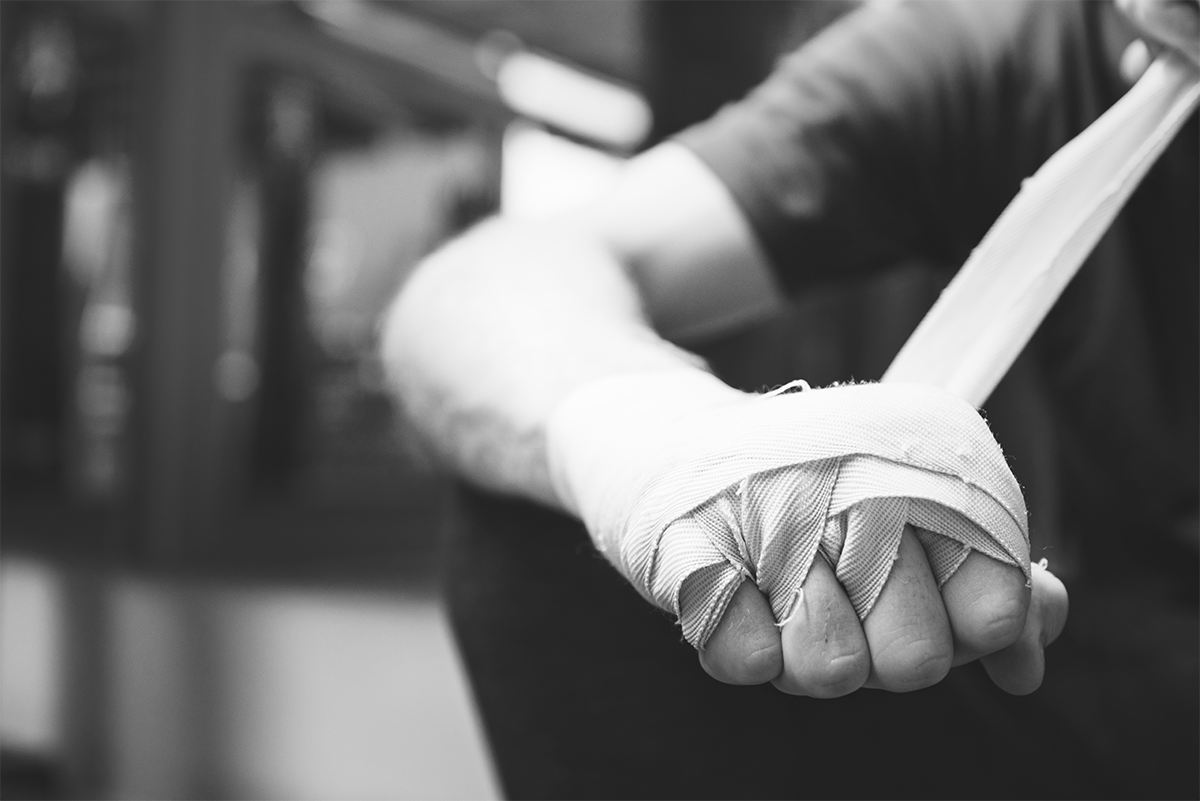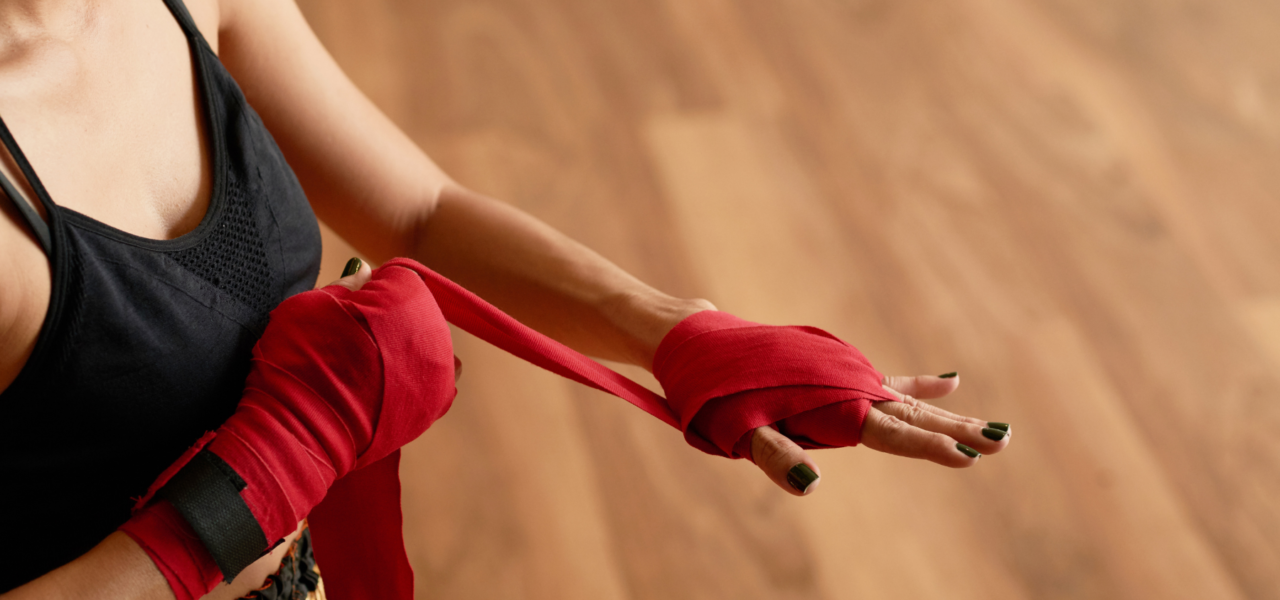Your cart is currently empty!
How do you choose between boxing, kick-boxing or muay thai?
If you decide to take up combat sports, you’ll be spoilt for choice. Whichever one you choose, the requirements are the same: rigor and dedication. More than just a way to get back into shape, these sports activities work the body and mind, while instilling self-discipline and self-confidence. That’s why it’s important to choose your combat sport according to your objectives and individual preferences.
Whether you just want to have fun, lose weight, learn how to defend yourself or even set your sights on a professional career, boxing, kick-boxing or muay thai are practical, all-round disciplines.
In this article, we’ll take a look at each of them, highlighting their similarities and differences.
Table des matières
Boxing: a classic that’s still relevant today

Boxing, also known as English boxing, remains one of the most popular combat sports: millions of people practice it every day, and the big fights are media events.
Boxing is one of the oldest forms of combat. Engravings and paintings of boxers dating back thousands of years have been discovered in Greece, the Middle East and India. This contact sport was developed in England in the 19th century and enjoyed a boom in the 20th century thanks to legends such as Muhammad Ali, Marcel Cerdan and Mike Tyson.
This is an art that only allows punches to be thrown with gloves padded above the belt. That’s why footwork and head movements are so important. It is forbidden to push or trip an opponent, or to hit him on the back, neck or back of the head. It is also forbidden to use the backhand or the edge of the hand and to hold the opponent to hit him. Boxers fight in a ring, in a series of rounds lasting from 1 to 3 minutes.
As a beginner, you’ll spend a lot of time developing your footwork and practising on the punching bag. Boxing training is extremely demanding. When your coach deems you’re ready, you’ll move on to more advanced aspects such as sparring.
Excellent for getting back into shape, boxing training simultaneously develops your cardio and muscles while helping you lose weight. Indeed, even as a recreational sport, boxing allows you to burn a lot of calories on the punching bag, hence the importance of choosing the right equipment.
Boxing is also one of the best methods of self-defense. It’s a practical combat sport that builds self-confidence and teaches respect, patience and humility.
Kickboxing, a pragmatic combat sport

In the 1970s in the USA, karate practitioners, frustrated by the strict rules imposed during competitions, created a separate combat sport that combines feet and fists in full-contact: kick-boxing.
Kickboxing is mainly practised for fitness, self-defence and as a contact sport. Both opponents are allowed to hit each other with all forms of kicks and punches above the waist, including drop kicks and spinning punches. Circular kicks and leg sweeps are permitted, as are direct knee strikes and short clinches.
As in boxing, head movements and footwork are fundamental elements of kick-boxing. A kick-boxer would probably feel at home in the ring fighting according to the rules of English boxing.
However, although kick-boxing and boxing have many points in common, they remain two different sports, and not just because of the use of kicks in kick-boxing.
How does kickboxing differ from boxing?
The biggest difference between kickboxing and boxing lies in the attack and defense strategies used. Boxing offers more possibilities for self-defense, since it is limited to punches above the belt. As for kickboxing, it offers more attacking opportunities thanks to the use of punches and kicks.
In terms of posture, boxers tend to position themselves sideways to minimize the space available for their opponent’s blows. Kick-boxers adopt a square stance in front of their opponents to defend themselves against punches and kicks.
The distance between opponents is also different: boxers prefer to get as close as possible to be able to place their blows, while kick-boxers need to keep a certain distance to enable more powerful blows with the feet.
In boxing, clinches involve grabbing your opponent with both hands, usually around the shoulders. This technique prevents the opponent from punching at full extension, and allows you to rest for a few seconds during a fight. In kick-boxing, clinches are placed around the nape of the opponent’s neck to deliver a direct knee strike.
The main advantage of kick-boxing is its wide arsenal of possible punches and kicks. As for boxing, by specializing solely in punches, it offers unrivalled speed thanks to intensive training.
Muay thai or the art of eight limbs

Well-known the world over, Thailand’s national sport is a traditional martial art that uses the fists, feet, knees and elbows, hence its name, the art of the eight limbs.
Practiced in the Kingdom of Siam since at least the 15th century, this combat sport also involves a form of stand-up wrestling using the clinch. Muay thai has been publicized by films such as “Ong Bak” starring Tony Jaa and the UFC, where its techniques are widespread.
With some of the highest striking potential in combat sports, Thai boxing uses all the techniques of kick-boxing, complemented by side-knee and elbow strikes. Leg kicks are designed to damage the opponent’s calf and thigh muscles, slowing him down. Elbows are used for the face, and the clinch is used to control the fight and deliver devastating knee and elbow strikes.
Although it varies from venue to venue, muay thai training is often demanding and can include intense sparring sessions, which help improve physical and mental stamina. Techniques are learned on paos and bear paws. Once you’ve learned how to place your strikes correctly, you can move on to real combat.
This contact sport requires flexibility, excellent cardio and good physical condition. If you’re already flexible, you’ll probably find it easier to get started, especially with your kicks. The numerous amateur competitions make it the ideal combat sport if you want to train competitively.
The differences between muay thai and kickboxing
If the difference between English boxing and kickboxing is obvious, the differences with muay thai are less so. However, there are several distinctions that should not be overlooked.
First of all, kick-boxing is based on punches delivered solely with the feet and fists, whereas Thai boxing also involves the use of elbows and knees, as well as the full clinch.
Secondly, muay thai strategy teaches fighters to wait for an opportunity to strike. This often results in an offensive by the opponent, followed by a swift and powerful counter-attack. Head movements, circling and linking are limited. Kick-boxing, on the other hand, relies on footwork, angles and movements, as well as foot-fist combinations.
In muay thai, the kick is executed with a rotating movement of the hip, while kick-boxing generally requires the knee to be cocked to deliver a kick.
Finally, the types of strike are also different. Muay thai favours simple, powerful blows that don’t throw you off balance if missed. Kick-boxing, on the other hand, includes a wide range of punches, some of which can be difficult to execute and can throw you off balance if they don’t hit their target.
Conclusion
If you lack the flexibility to use kicks effectively, boxing would probably be the most suitable combat sport for you. Not only will you benefit from superb physical condition, but you’ll also know how to defend yourself if need be.
On the other hand, if you’re flexible, you’d be better off taking up kick-boxing or muay thai, which are undoubtedly the most effective foot-fist contact sports when it comes to striking. If you opt for kick-boxing, you can enrich your technique by integrating the counter-attacks and power of muay thai blows, as well as the clinch. If you choose muay thai, kick-boxing techniques can help you improve your movements and add more complex moves to your arsenal.







